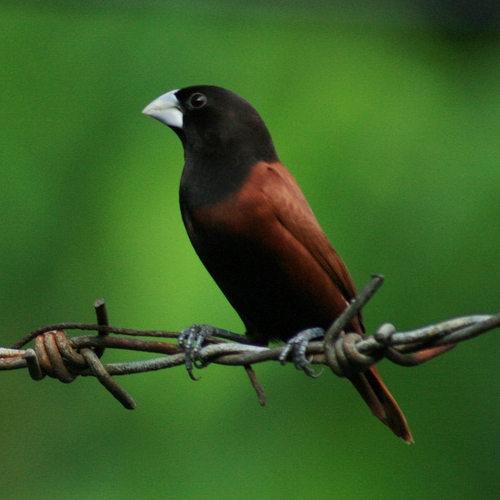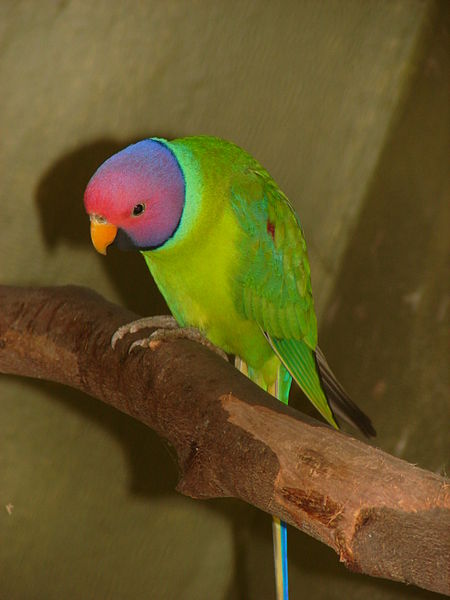 Also known as the Bronze-Winged Pionus, Pionus chalcopterus, this delightful little bird has been somewhat ignored by US parrot keepers until recently. However, it has many fine pet qualities and boasts a beautiful “color scheme” that is not common among its relatives.
Also known as the Bronze-Winged Pionus, Pionus chalcopterus, this delightful little bird has been somewhat ignored by US parrot keepers until recently. However, it has many fine pet qualities and boasts a beautiful “color scheme” that is not common among its relatives.
Description
The 11-inch-long Bronze-Wing’s beauty lies not in bright, “screaming” plumage but rather in a subtle blend of colors. It may at first appear somewhat dull, but closer inspection will reveal that the body plumage is dark purple to navy blue, and overlain with a bronze tint…quite attractive and ever-changing with light levels. The pink eye ring and pink-edged head feathers add to its unique appearance, and red coverlets decorate the tail. Read More »
 That Bird Blog – Bird Care and History for Pet Birds
That Bird Blog – Bird Care and History for Pet Birds




